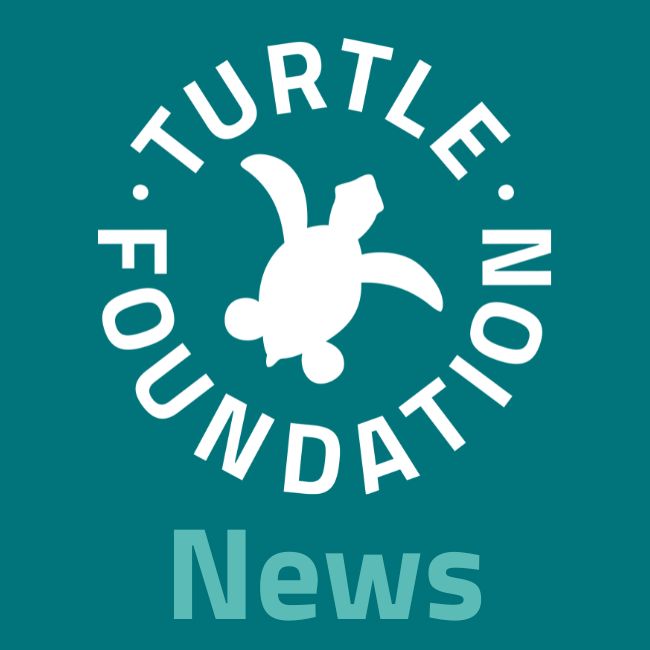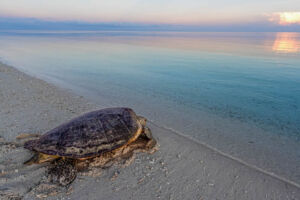
Good news for species conservation: The Green Sea Turtle (Chelonia mydas) has been downlisted by the International Union for Conservation of Nature (IUCN) on the Red List from “endangered” to “least concern.” After decades of intensive conservation efforts, the global population of these sea turtles has increased by around 28 percent since the 1970s – an impressive testament to the effectiveness of consistent conservation action. However, this success is no reason to stop our work. Many regional populations remain at risk, and threats such as the illegal trade in eggs, hunting, bycatch in fishing nets, the loss of critical nesting beaches, and the impacts of climate change continue to endanger their survival.
Our Work in Indonesia to Protect the Green Sea Turtle
For 25 years, we have been committed to protecting the Green Sea Turtle in Berau, Indonesia. The coral islands of the Berau Archipelago form the largest nesting site for this species in the country. Thanks to our conservation measures, over 10 Million hatchlings have successfully hatched and made their way to the sea under our protection in recent years.
The Green Sea Turtle is one of the most iconic marine species in the world. With a shell length of up to 120 centimeters, it feeds mainly on seagrass, algae, and marine plants. Since 1988, it has been protected internationally under the Washington Convention (CITES), and it has also been strictly protected under Indonesian law since 1990.

Green Sea Turtle on its way back to the ocean


